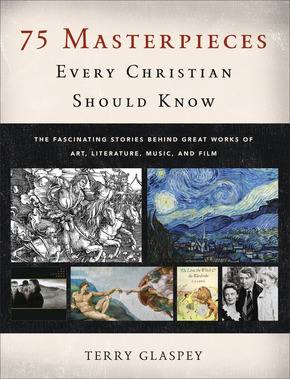I’m one of those unfortunate souls who lives with no Chick-fil-A restaurant within driving distance. This means eating chicken nuggets with Polynesian sauce and a side of waffle fries is always a treat. And an occasional McDonald’s quarter pounder or Taco Bell burrito can be just what I need when I’m hungry and in a hurry.
Though fast food is sometimes exactly what my palate craves, usually it does little more than live up to the promise in its name: it’s fast. When fast food becomes a staple in one’s diet, it isn’t such a good thing. As good as it seems at the moment, it doesn’t provide much nutrition or real satisfaction.
Similarly, when it comes to cultural nourishment, there’s nothing wrong with a little mindless entertainment now and then—books and music and movies that distract from the pressures of our busy lives. But perhaps some of us take too many trips to the drive-thru window of culture, settling for the equivalent of greasy burgers when we could be feasting on steak and lobster with a side of crisp steamed vegetables.
We can all benefit from a little more serious fare in our cultural diet.
Expanding Our Diets

In the world of art gourmet “meals” that await us, recipes for expanding our hearts and minds and for gaining a bigger perspective on ourselves, our Maker, and the world. Master chefs of the imagination are cooking up new delights in the visual arts, literature, music, and film. We need them to strengthen our faith, ignite our compassion, and deepen our understanding.
So often Christians embrace art of a rather shallow nature—sermons delivered in the form of novels and movies and music. They’re safe, largely unchallenging reminders of what we already know and believe, providing the comfort of feeling we’ve got things figured out. Much of what we call “art” is entertainment, or decoration, or propaganda for our cause. It can dull our senses rather than make them come alive.
Preachy Art
Art and preaching are not interchangeable. They serve unique purposes. Good biblical preaching is one of the essential needs of the church, but preaching isn’t the purpose of art. The best preaching is proclamation, unambiguous in its message, calling for a specific response—a decisive change of thinking or action. Art may achieve similar responses in us, but its approach is generally more ambiguous and works on a more subconscious level. It may take hold of us rather slowly, or like a time bomb suddenly explode, yielding an epiphany only after we’ve sat with it for a time. Sometimes art will demand patience and careful attention—virtues in short supply in our hectic age.
Through art we don’t just understand; we feel. We experience. Art moves us in ways that can bypass the walls we build to keep out the truth.
Artistic Heroes
I’ve discovered new things about myself, the world, and God through the magnificent paintings of Rembrandt, Van Gogh, and Fujimura; through the penetrating music of Bach, Handel, Gorecki, and Dylan; through the beautifully crafted words of Donne, Hopkins, Dostoevsky, and Austen. I can’t imagine how impoverished my life would feel if I didn’t have the companionship of these fellow travelers of faith.
Gerard Manley Hopkins, for example, was a late 19th-century poet who clearly saw the fingerprints of God in his created world. Hopkins crafted beautifully complex poems celebrating that realization:
The world is charged with the grandeur of God.
It will flame out, like shining from shook foil;
It gathers to a greatness, like the ooze of oil
Crushed. Why do men then now not reck his rod?
Generations have trod, have trod, have trod;
And all is seared with trade; bleared, smeared with toil;
And wears man's smudge and shares man's smell: the soil
Is bare now, nor can foot feel, being shod.
And for all this, nature is never spent;
There lives the dearest freshness deep down things;
And though the last lights off the black West went
Oh, morning, at the brown brink eastward, springs —
Because the Holy Ghost over the bent
World broods with warm breast and with ah! bright wings.
Hopkins has helped me appreciate what Psalm 19 means when it speaks of the “voice” of nature, and his poetry has added new vocabulary to my lexicon of praise.
Moreover, in his 2011 film The Tree of Life [review], Terrence Malick put flesh on the difference between the “way of nature” and the “way of grace.” [view trailer]
By capturing these ideas in images and dialogue, Malick expanded my understanding beyond intellectual comprehension. He helped me feel truth in the depth of my bones. And that is something great writers, artists, musicians, and filmmakers have done for me time and again.
Invitation to Be Transformed
In An Experiment in Criticism, C. S. Lewis observes that art asks us to become vulnerable in order to receive it. This vulnerability helps us encounter God in new and unexpected ways. We can be challenged and changed, and given new eyes to see.
Great art offers us fresh perspective. It provokes us to think, and it challenges us with hard questions and uncomfortable realities. It teaches us how to pay attention to the beauty and wonder around us, arousing us from the stupor of everyday life to appreciate the signs of glory all around. Great art can make the past tangible to us through realistic portrayal, or give us vision to gaze into possible futures. Sometimes it breaks our heart; other times it heals it. It can lift us out of weariness, isolation, or sadness. Great art can transform us.
So consider this an invitation to treat yourself to the kind of art that may take a bit of effort to digest because it is rich, complex, and sumptuous; art that reaches out to your senses and gives evidence of the mastery that created it. Feast on it, taste and see that it is good, a reflection of the creativity of the Creator.
Is there enough evidence for us to believe the Gospels?
 In an age of faith deconstruction and skepticism about the Bible’s authority, it’s common to hear claims that the Gospels are unreliable propaganda. And if the Gospels are shown to be historically unreliable, the whole foundation of Christianity begins to crumble.
In an age of faith deconstruction and skepticism about the Bible’s authority, it’s common to hear claims that the Gospels are unreliable propaganda. And if the Gospels are shown to be historically unreliable, the whole foundation of Christianity begins to crumble.


































